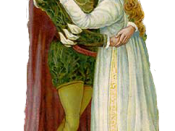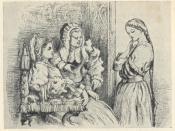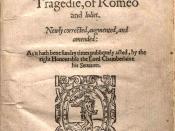Peter Ligeiro
William Shakespeare's highly acclaimed drama Romeo and Juliet is the story of two lovers against fate who by their death end the quarrels between their families, the Montague's and the Capulet. After meeting each other at a masquerade, they fall in one. However, the dread between the houses proves too strong as the story ends with a tragic ending. People who become masters of their trade have first to become masters of the tool. For a writer, this tool is language, and throughout history, many have wielded the written word, including William Shakespeare. Throughout Romeo and Juliet, William Shakespeare uses these words to convey more than their surface value. This is done by using confusion, most notably in the form of oxymorons and puns.
Confusion is Shakespeare's primary asset when creating the irony within his story. He accomplishes this primarily by utilizing oxymorons and puns. This asset is first shown in an argument between servants of the houses of Montague and Capulet. Tybalt accuses Benvolio of hypocrisy because of the fact that Benvolio, the Montague draws his sword and talks of peace. The line "drawn and talk of peace" causes much confusion and also describes the conflict between the two rival houses, who pretend to be at peace while knowing they are at war.
One of the forms in which confusion is presented is in the form of oxymorons. These oxymorons found in the story such as "brawling love" and "loving hate" creates for us an intricate image from elements that seem to be self-contradictory. The contradictory statements that make up the speeches of the characters serve to showcase their inability to convince themselves of what is fact, due to the confusion that plagues them.
Yet another form is which confusion is presented is in the form...


